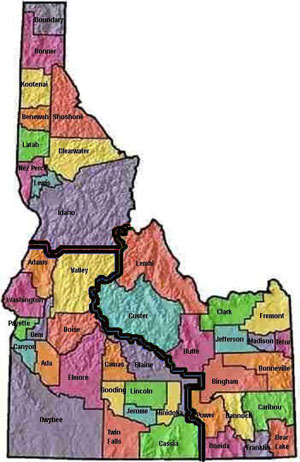Student Loans
Student Loans
College Loan Benefits
Applying for Loans
Choosing a Lender
Compare Loans
Borrowing Amount
Government Loans
Federal Loans
Government Loans
Stafford Loans
Perkins Loans
Federal Direct Loans
Low Interest Loans
Fed Loan Distribution
State Student Loans
Alternative
Alternative
Parent PLUS Loans
Graduate PLUS Loans
Home Equity
Major Lenders
Loan Organizations
Private Student Loans
ACS Student Loans
NelNet
Sallie Mae
Signature Loans
Loan Consolidation
Loan Consolidation
Consolidation Benefits
Consolidation for Graduate Students
Loan Repayment
Repayment Options
Loan Grace Period
Student Loan Discounts
Loan Cancellation
Student Loan Precautions
Loan Forgiveness
Defaulted Loans
Getting Out of Default
Loan Deferment
Loan Forbearance
For college students in The Gem State, The Idaho State Board of Education is your primary resource for initial college financial planning.
Below you will find additional information for staying on track and building an effective strategy for paying for college in Idaho.
First, there are two types of loans available:
One of these two basic types of loans will certainly figure into your Idaho Student Loan plan. But don't forget, Idaho offers many other alternatives in the way of aid - scholarships, grants, work-study and loan repayment programs.
Federals Stafford Loans should be considered the first option because they provide low interest rates and the most attractive pay-back plans available in the country.
Pursuing a federal loan involves a fairly simple, step-by-step process that starts with completing the FAFSA (Free Application for Federal Student Aid). Guidelines for this part of the process include the following:
After completing the FAFSA and applying for the loans through the FAFSA website, you will also need to complete a Master Promissory Note (MPN). This legal document can be filled online, and it is a written promise that you will repay your federal loan and its accrued interest.
Federal Stafford Loans are the standard loan for which students apply. Stafford Loans come in both subsidized and unsubsidized form. Both are available to most students, and many students choose to accept both types.

Subsidized loans have the following specific characteristics:
Unsubsidized loans are different in the following ways:
Parent PLUS Loans are also another option designed to provide a low-cost financial option for parents of undergraduate students.
PLUS Loans for Graduate and Professionals are another federal loan option. These provide access to the next tier of federal aid when graduate students have reached the lifetime limits on their Stafford Loans.
More information and details on these loans are available through the FAFSA website.
Because most private student loans tend to offer much higher interest rates, and they also have the tendency to sneak in extra fees that add to the total cost of the loan, they should really be a last resort for financing college.
If you do choose to pursue a private student loans, shop carefully for a lender, and read all the fine print. You want to be very clear on what you're getting into with a private student loan.
For additional details on borrowing money, making a planning schedule, estimating your loan needs and monthly payments in pay back, visit this section of the FAFSA website.